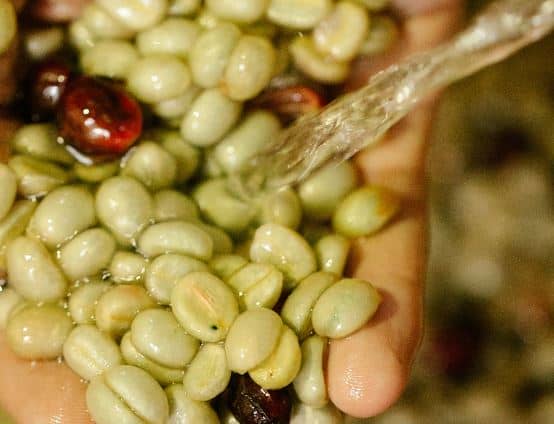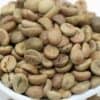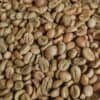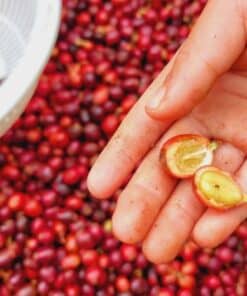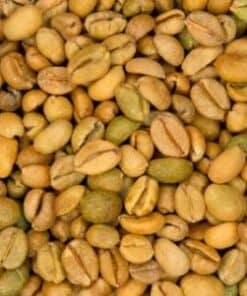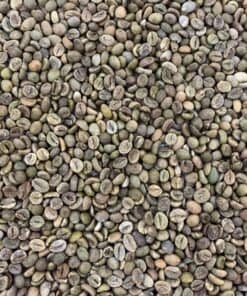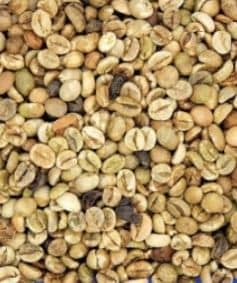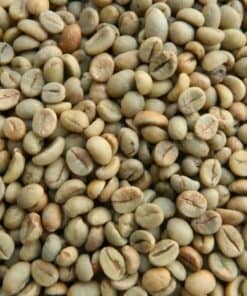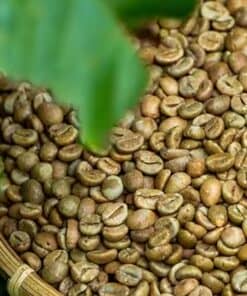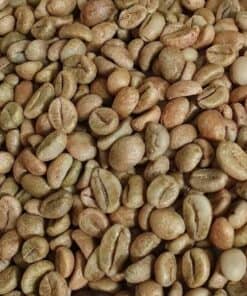Coffee Beans Overview
Robusta Fully Washed Processed Coffee Beans – S18, S16: These beans boast a distinct, rich coffee aroma paired with a bold flavor. The taste begins strong, with a slightly bitter aftertaste that transitions into a sweet and alluring finish. Ideal for brewing in the traditional Vietnamese filter style.
1. Key Features of Wet-Processed Robusta Coffee
Wet-processed robusta coffee is celebrated for its exceptional uniformity, achieving up to 97-98% consistency in both color and grain size. This processing method ensures a delightful brewing experience.
Harvesting Process:
The beans are typically hand-picked, focusing solely on ripe fruits. Traditional robusta varieties, known for their smaller beans and superior taste, stand apart from high-yield robusta beans, which are larger, hollow, and less flavorful.
Advantages:
- Enhances the full flavor potential of the beans.
- Produces beans with minimal defects, including lower rates of black, broken, or impure beans.
Challenges:
- Requires skilled staff to prevent over-fermentation, which can produce unwanted flavors.
- Involves high costs due to machinery usage and wastewater management.
After fermentation, the beans are thoroughly washed to remove residues, then dried meticulously—often on nets in enclosed spaces to maintain quality.
Alternative Offerings:
In addition to wet-processed coffee, Motherland Coffee provides hand-selected, dry-processed robusta coffee suitable for both filter and machine brewing.
Specifications:
- Moisture Content: ≤ 12.5%
- Black Beans: ≤ 0.1%
- Broken Beans: ≤ 0.3%
- Foreign Matter: ≤ 0.1%
- Size: 90% ≥ S13
- Packaging: 60 Kg jute sacks
2. Origins and Unique Flavors of Robusta Coffee
Robusta coffee is renowned for offering diverse and sophisticated flavors, with quality varying by region:
- Top Regions: Buon Ho, Dak Mil, Dak Ha (Kon Tum Province).
- Other Regions: Binh Duong, Binh Phuoc, Dong Nai – offering slightly distinct characteristics compared to the Central Highlands’ robusta beans.
Cultivation Insights:
Robusta coffee’s quality depends on the location, processing method, and care in cultivation. Wet-processed beans stand out due to their smoother texture and richer flavor profile compared to dry-processed variants.
Certifications and Recognition
- Rainforest Alliance Certified
- Fairtrade Certified
- USDA Certified
Exploring Vietnamese Robusta: Bold Flavors and Unique Profiles
Vietnam, the leading global exporter of robusta coffee, dedicates approximately 90% of its coffee fields in the Central Highlands to this crop. Notable areas include:
- Kon Tum, Gia Lai, Dak Lak, Dak Nong, Lam Dong provinces.
- Famous Regions: Buon Ma Thuot, Pleiku, Ayun Pa, and Buon Ho.
Cultivation Conditions:
At altitudes of 500-600m, the Central Highlands’ red basalt soil and temperate climate create optimal conditions for cultivating premium robusta coffee.
Distinctive Features:
These beans are known for their high caffeine content, bold taste, and low acidity. Regional variations add unique notes of butter, oil, or caramel, capturing Vietnam

